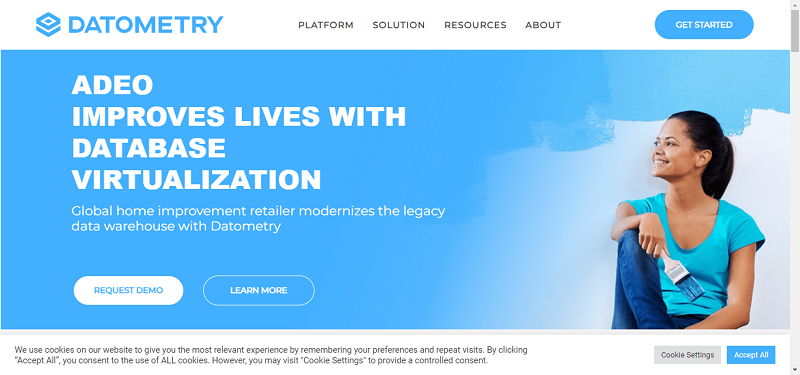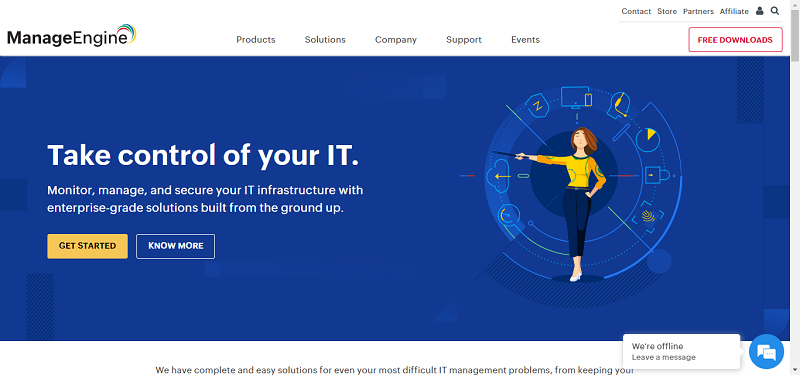“I am tired of hearing about how Cloud will allow customer personalization — I want to feel it!” I said to IBM Cloud expert Sanjay Rishi. Here’s how he answered.
“Imagine you are a large equipment company, serving both mining and farming customers. Your organization recently migrated to the cloud, freeing and connecting (at the same time) unfathomable amounts of data. By weaving seemingly infinite IoT sensor information together with cognitive analytic capabilities, your ‘IT system’ can now sift through endless data points including; hours of operation, weather — even level of vibration. By continuously analyzing new information against growing mountains of historical information, your organization can now start giving your customer some pretty interesting insights. ‘In approximately 27 days, there will be a possible failure in your pressure system. If you allow us to order the spare parts now, your machinery should only be down for 2 hours vs up to 2 weeks. The cost savings will exceed $500,000.’ Not magic… but close.”
If this company’s competitor couldn’t provide the same insight — would you consider them? What about this for your car? Your dryer? And so we begin to understand the promise of Cloud.
The truth is we are right now experiencing a radical shift from ‘data mining’ — to ‘data farming’ — and you want to know about it. Data mining is the computing process of discovering patterns in large data sets. Data farming however, is the process of using computational experiments to “grow” data, which is analyzed using statistical, visualization techniques giving insight into complex systems. Small-scale experiments let users determine whether treatments are effective… and the results can reveal root cause-and-effect relationships never before detectable. This Ladies and Gentlemen, is the real deal, and it happens in the Cloud.
“People spend a lot of time talking about the silo-ed nature of technology in financial services — but what they miss is that these organizations weren’t lazy or foolish in deciding IT design strategies,” comments Mike Fitzgerald, IBM Cloud Partner. “It’s that the tasks the systems had to perform — protecting customer trust, complying with regulation — were, and still are very complex endeavors. Before cloud technology the thought of linking all those systems together was near impossible. But now… a realization.” What does that mean for business? Here’s how to look at it. Historically, IT has always been one step behind business demands, but what if Cloud could allow IT to innovate at the speed of business? To push the business? Could cloud be that vehicle? What if IT could actually go from the the bad guy — to the good? From bottleneck to enabler? Could cloud make that possible?
Fitzgerald continues, “Can you believe that the UK just finished paying off its WWII war debt to the US 3 years ago? Well, that’s similar to the positions global financial institutions find themselves vis a vis their technology infrastructure today, paying for the decisions of the last few decades. It’s called “Technology Debt” and if not managed deftly, could cripple the competitiveness of world financial organizations as they compete against agile and nimble Fintech’s.
Historically, when my clients needed to expand their IT, we would begin what were long and arduous programs. We‘d have to secure a project manager and resources, articulate project goals, produce activity timelines, make infrastructure decisions — and then co-ordinate all the moving parts. Servers, applications, intellectual assets, coding, people. The original investment plus subsequent, and continuing costs to maintain, up-grade and run systems creates what I call ‘The Long Tail of IT Investment.’”
But if this storm of IT indebtedness could threaten the foundational health of our banks, is Cloud the strengthening joist, and ultimately the shining sun set to prevent that? “As you invest in Cloud,” Fitzgerald continues, “you are not investing in assets, you’re spending in Op — Ex (Operational Expense). That’s it. A service. And you know what the best part is? When you’re not using it — you can turn it off (public cloud primarily, private cloud depends on implementation choices)! No more one last user running the whole system. Only perfect silence. And that begins the end of your long tail.”
The expanse of ways to interpret data using cloud capabilities also allows users a crystal clear transparency as to the costs of IT, which in turn makes value and benefit assessments — a lot more valuable. Cloud provides virtual IT service to businesses. It saves them money, and it lets them know where they are saving money — which is sometimes even more important. Clarity through the Cloud.
No one can argue that Cloud platforms enable the automation of analytics, allow shorter testing and development life cycles, deliver real-time predictive analytics and frees users to efficiently grow at scale — but where do you start with all that data once you can actually use it! What do you do with all that power? In this whipping wind, this technology torrent, there is one guiding light. You guessed it — the customer.
“I have visibly seen my clients relax when we circle back to the customer. We stop wagging the dog and we say, ‘What would you like to know about your customer? Why? What data would you need? How would you get it? Cleanse it? What is the investment? Is it a directional investment you want to make? What are possible ROIs? We then have a framework with which to start — and we get started. The fact is that once you get your head around the enormity of it, the possibilities start to set in. You realize you can help clients change as fast as their customers need them to. And that feels good,” Rishi explains.
Heaven, Right? Not so fast. Between assessing requirements, complying to regulation, and interpreting emergent technologies — the struggle is real. Aman Mohindru, IBM Cloud Security & Privacy Architect/Leader says, “My clients and I can’t be too careful when we’re assessing the specific needs and requirements their particular cloud migration — and elevation — will demand. And it’s different in each case. Yes, some of the tools are the same, but the way you architect them to fit a client’s individual profile is almost like artistry.
No details can be overlooked during evaluation, and it helps to have been around the block. For Instance, many cloud solutions offer to put your data in storage for free — but what about if a business or regulatory change arises — or a technical breakthrough occurs? I’ve helped more than one client attempt to exit agreements with the best outcome possible, but it was painful just the same. That’s just one of the many things to be cognizant of when in the analysis stage of your Cloud Strategy. We find it helps to organize key considerations into Six Key Areas, and really drill down from there.”
1 — Access Management
2 — Network Security
3 — Application Security
4 — Data Protection/Encryption
5 — Regulatory Environments
6 — Exit Strategy
“Cloud enablement today also requires a culture change within an organization — to adopt, but more importantly to optimize, the fascinating technology. And let’s not forget the emotional side of this type of transition. Re-training and moving people from jobs they’ve held for years is not easy. I see my clients struggle with the human side of automation, for sure, but the opportunity for change and growth for their organization can be an inspirational thing if organized and executed correctly. People, and future growth. That’s what I hear my clients talk about.” comments Shankar Kalyana, IBM Fellow.
The 1–2–3 of Cloud Ignited Transformation
1) Ask yourself where you want to go with both your business, and your technology. Make sure they’re aligned. What problem are you solving…or opportunity reaching for? How will it add value to your organization? What are the drivers — and the benefits? Start with small Proof Points — realize the value. Proceed from there.
2) Concentrate on a clear source systems analysis and assess the entire technology portfolio to decide at an enterprise level what should be retired, consolidated, modernized or continued. Look for Agility — How can I get the migration journey done — and start innovating!?
3) Be honest about the fact that this is just the first step in an epic journey. No one technology will deliver the solution. It is now about the entwine of ever emerging technology and expansive imagination. Cloud. Cognitive. Digital. Be aware. Be open. Begin the Voyage.
By Beth Desmond
Beth is a seasoned Corporate Storyteller working with IBM Subject Matter Experts to create unique and provocative Points of Views illustrating how IBM is helping clients globally and across industries. Beth has worked for The Economist as well as Accenture, PWC and most recently Capco, after having begun her career as a commodity derivatives trader.





